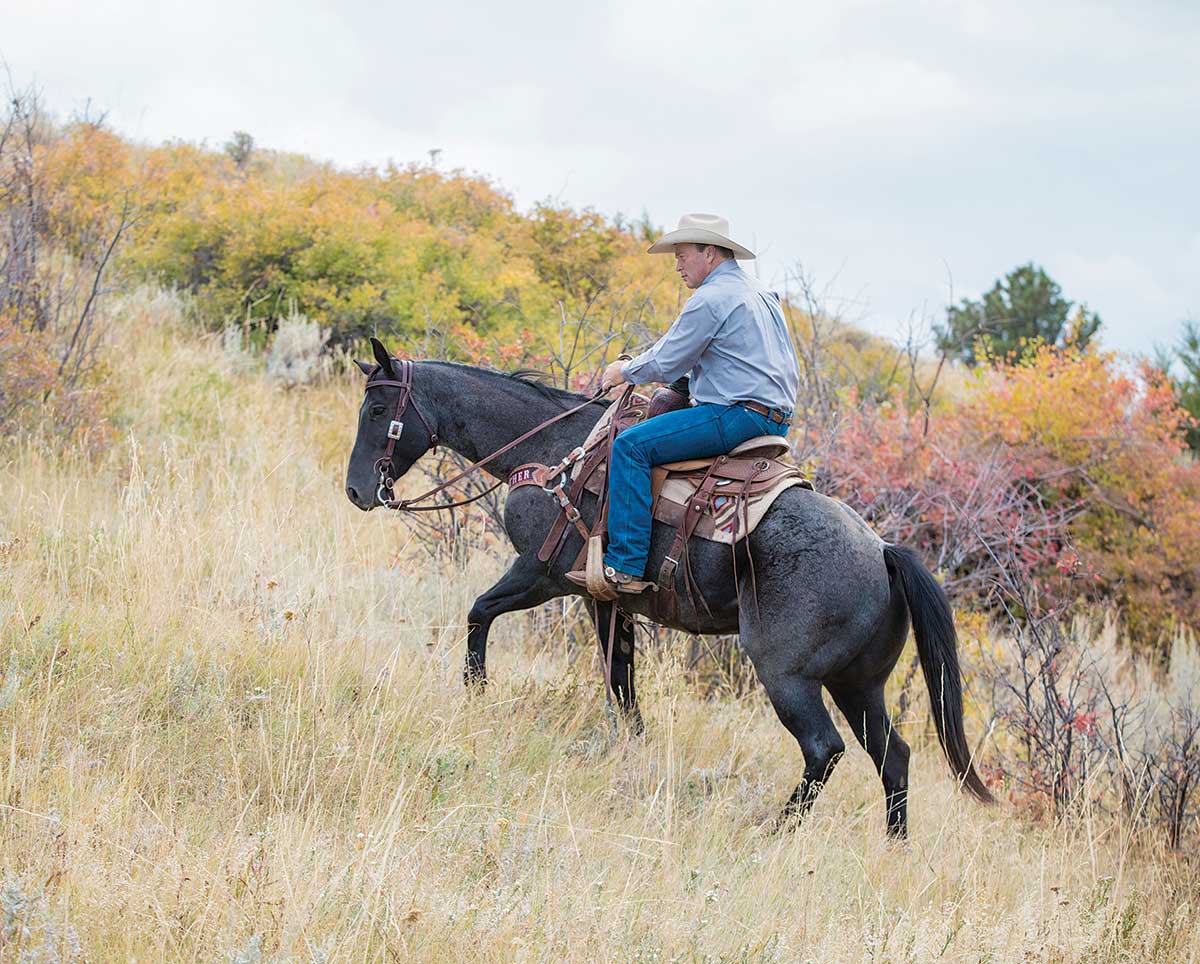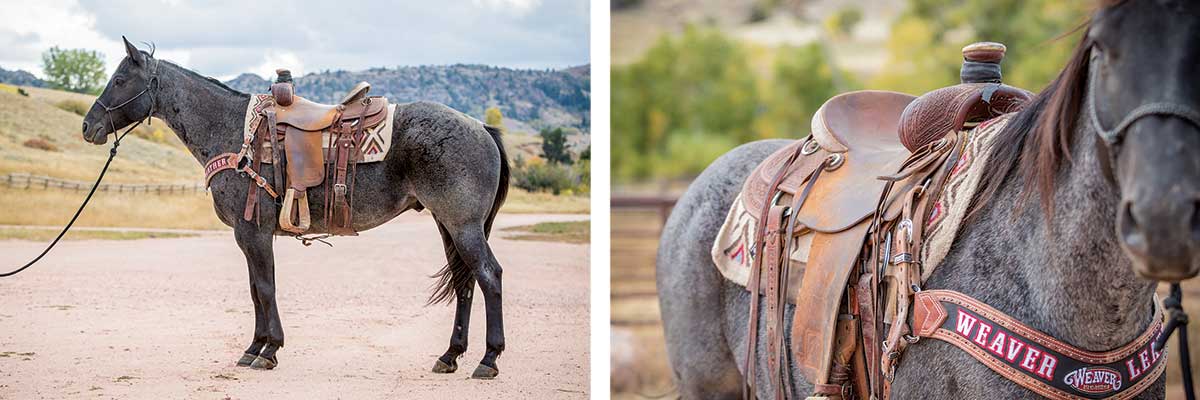
Here I’ll help you select (or make sure you already own) the right trail saddle for your horse and for the particular type of trail riding you do. First I’ll give you saddle-fit tips. Then I’ll explain how the saddle’s tree can help or hinder your horse’s performance—and how each tree type suits a specific purpose. Finally I’ll give you a rundown of add-ons designed to help secure your saddle over challenging terrain.
Find a Fit
Evaluating saddle fit is both an art and a science, but you can look for clues of poor fit yourself. Pressure-point indicators include uneven sweat patterns, white hairs, and back soreness.
You can also perform a quick visual assessment. Place your saddle over a pad on your horse’s back, leaving the cinch hanging straight down. Step away to evaluate how your saddle sits on your horse’s back. If your saddle doesn’t fit, find one that does.
A too-narrow fit appears to sit uphill on your horse’s withers. It’s loose near the swells and gets progressively tighter toward the cantle. A too-narrow fit creates a gap over the top of his back; the pressure rests entirely over his hips and shoulders, soring his shoulders. This saddle will also pinch his withers.
A too-wide fit appears to sit downhill on your horse’s back. It hugs his shoulders near the swells, then flares out at the skirt. There’s no contact between your saddle and your horse’s back until you’ve settled in the saddle. A too-wide fit creates pressure over your horse’s shoulders, which sores the top of his withers and can even lead to a fistula (an abnormal passage that leads from an internal infection to the outside of your horse’s body).
Go Inside
In a properly fitted saddle, the tree’s bars—the two pieces that connect the fork and cantle and lie on either side of your horse’s spine—roll away from your horse’s shoulders through a twist-and-rocker mechanism. Here’s what I mean.
The bars lie flatter over your horse’s back than along his withers, where they curve to a more vertical position. The change in the curve’s angle from side to side is the twist; the amount of curve from front to back is the rocker. At the fork, the bars flare to the outside to provide freedom of shoulder movement. To distribute weight evenly—and allow this mechanism to function properly—the bars’ entire lengths must have even contact with his back. Bars set too close together or too far apart for your horse’s back shape will cause discomfort and inhibit his shoulders’ range of motion.
The type of tree should complement the type of riding you most often do; here’s a rundown.
Rigid tree. A standard saddle tree has the structure to support stressful, working situations, such as pulling brush and fallen logs off the trail in the backcountry. Be particularly aware of a rigid tree’s fit or you’ll sore your horse’s back.
Synthetic tree. A solid synthetic tree also gives you support and pulling power. A synthetic saddle is lighter in overall weight, easier to care for, and more economical than many working saddles, while offering the same level of durability. However, many synthetic saddles don’t have the same high-quality tree of a working saddle, so be especially careful of fit.

Flexible tree. A flexible-tree saddle is perfect for a hard-to-fit horse. Some flexible trees are rigid enough to pull light weight from the horn. Other models’ bars are rigid enough to support your weight and conform to your horse, but aren’t suitable for pulling. Do research to determine which flexible-tree style meets your needs.
Treeless. A treeless saddle takes away much of the hassle of fit. A rigid swell and cantle provide basic support, but there are otherwise no solid, intrusive pieces along your horse’s back to cause discomfort. However, a treeless saddle doesn’t dissipate heat well, which can be uncomfortable for your horse on a long ride. And because the saddle doesn’t have much structure, you’ll also have to keep tightening the cinch to keep it on, and you can’t pull obstacles.
Add Security
Consider saddle add-ons for extra security on hills and over rough terrain.
A breast collar keeps the saddle from sliding back or rolling when riding uphill or through other difficult terrain. Be sure the pole-strap that affixes the breast collar to the front cinch isn’t too loose.
A back cinch prevents the saddle from tipping forward and adds security when pulling. Tighten it against your horse’s belly so it serves its purpose and doesn’t catch on trail hazards.
A crupper is a leather strap that goes under the tail and attaches to the back of the saddle to help prevent the saddle from sliding forward when riding downhill.
Trainer, clinician, and lifelong cowboy Ken McNabb hails from Lovell, Wyoming. He helps riders and horses build and enjoy partnerships working on the ranch and riding on the trail. His show, Discovering the Horseman Within, airs weekly on RFD-TV. Learn more
about McNabb and find his clinic schedule at kenmcnabb.com.






